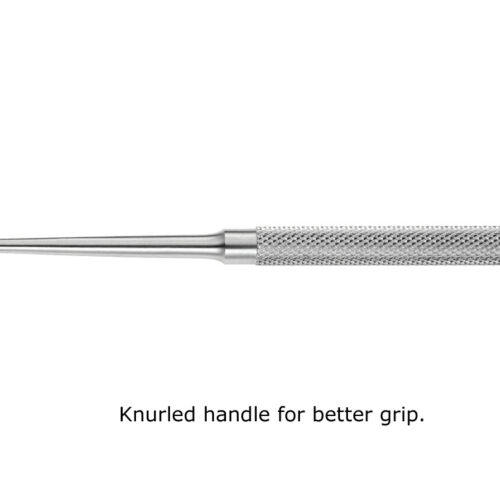Introduction
In the ever-evolving field of surgery, the tools that surgeons rely on are continually being refined to improve patient outcomes. Joseph Skin Hooks are one such instrument that has undergone innovation to enhance their functionality and effectiveness. This blog explores the advancements in Joseph Skin Hooks, their applications in contemporary surgery, and the future of surgical retraction tools.
The Evolution of Joseph Skin Hooks
Originally designed to provide simple skin retraction, Joseph Skin Hooks have evolved to meet the growing demands of modern surgical procedures. Advances in materials and design have led to the creation of more efficient and user-friendly instruments, allowing surgeons to perform delicate procedures with greater precision.
Applications in Surgical Procedures
Joseph Skin Hooks are commonly used in a variety of surgical contexts, including:
- Dermatologic Surgery: In procedures like excisions of skin lesions or tumors, skin hooks help retract the skin to provide clear access to the affected area.
- Plastic and Reconstructive Surgery: These hooks play a crucial role in skin grafting and flap surgeries, where precise handling of skin is essential for successful outcomes.
- Orthopedic Surgery: During orthopedic procedures involving joint access, Joseph Skin Hooks can be utilized to retract the skin and underlying tissues effectively.
Design and Features of Joseph Skin Hooks
Joseph Skin Hooks are characterized by their unique design, which typically features a curved, pointed hook on one end and a handle on the other. The following features contribute to their effectiveness:
- Curved Hook Design: The curved shape of the hook allows for gentle retraction of the skin, providing optimal visibility of the underlying structures without causing unnecessary stress or damage to the tissue.
- Material Quality: Made from high-quality stainless steel, Joseph Skin Hooks are durable and resistant to corrosion. This quality ensures their longevity and ability to withstand repeated sterilization.
- Ergonomic Handle: The handle of a Joseph Skin Hook is designed for ease of use, allowing surgeons to maintain a secure grip while maneuvering the instrument during delicate procedures.
Advantages of Using Joseph Skin Hooks
The use of Joseph Skin Hooks in surgical settings offers several advantages:
- Enhanced Visibility: By retracting the skin without compressing or damaging underlying tissues, these hooks provide surgeons with an unobstructed view of the surgical site, promoting better accuracy.
- Minimized Trauma: The gentle design of the hooks helps reduce tissue trauma, leading to improved patient recovery times and reduced scarring.
- Versatility: Joseph Skin Hooks are versatile instruments suitable for various surgical specialties, making them a valuable addition to any surgical toolkit.
Key Innovations in Joseph Skin Hooks
- Advanced Material Technology: Recent developments in material science have resulted in Joseph Skin Hooks made from lightweight, high-strength alloys. These materials not only reduce the overall weight of the instruments but also enhance their durability and resistance to wear.
- Improved Ergonomics: Modern Joseph Skin Hooks often feature ergonomic handles designed to minimize hand fatigue during lengthy procedures. This innovation allows for better control and precision, which is crucial during delicate surgeries.
- Coated Tips: Some contemporary versions of Joseph Skin Hooks come with coated tips designed to improve grip on the skin. This feature minimizes slippage and allows for more effective retraction, further enhancing visibility during procedures.
- Varied Hook Sizes: Innovations have led to the production of Joseph Skin Hooks in various sizes and shapes, allowing surgeons to choose the most appropriate tool for specific procedures. This versatility enhances the effectiveness of skin retraction across different surgical specialties.
Applications in Modern Surgery
Joseph Skin Hooks have a wide range of applications in today’s surgical landscape, including:
- Minimally Invasive Techniques: As minimally invasive surgery becomes more common, Joseph Skin Hooks are utilized in laparoscopic procedures to provide access to small incisions while minimizing trauma to surrounding tissues.
- Cosmetic Surgery: In cosmetic procedures, where aesthetics are paramount, Joseph Skin Hooks facilitate precise retraction while minimizing scarring, ensuring optimal results for patients.
- Pediatric Surgery: Due to their gentle retraction capabilities, Joseph Skin Hooks are frequently used in pediatric surgeries, where delicate handling of tissues is critical.
Training and Skill Development for Surgeons
With the ongoing advancements in Joseph Skin Hooks, it is vital for surgical trainees to receive proper education and hands-on training in their use. Familiarity with the latest instruments allows surgeons to maximize their benefits and enhance surgical outcomes. Surgical education programs should focus on the practical application of these tools to ensure that future surgeons are well-equipped to handle complex procedures.
The Future of Joseph Skin Hooks
The future of Joseph Skin Hooks looks promising, with continued research focused on improving their design and functionality. Potential innovations may include smart retractors equipped with sensors to monitor tissue pressure, ensuring optimal retraction without compromising tissue integrity. As technology progresses, Joseph Skin Hooks will likely become even more integral to the success of surgical procedures.
Conclusion
Joseph Skin Hooks are vital instruments in the surgical toolkit, providing essential support for skin retraction during a variety of procedures. Innovations in design and functionality have enhanced their effectiveness, making them indispensable in modern surgery. As surgical techniques continue to evolve, the role of Joseph Skin Hooks will remain crucial in ensuring optimal patient outcomes, solidifying their status as essential tools in the operating room.
